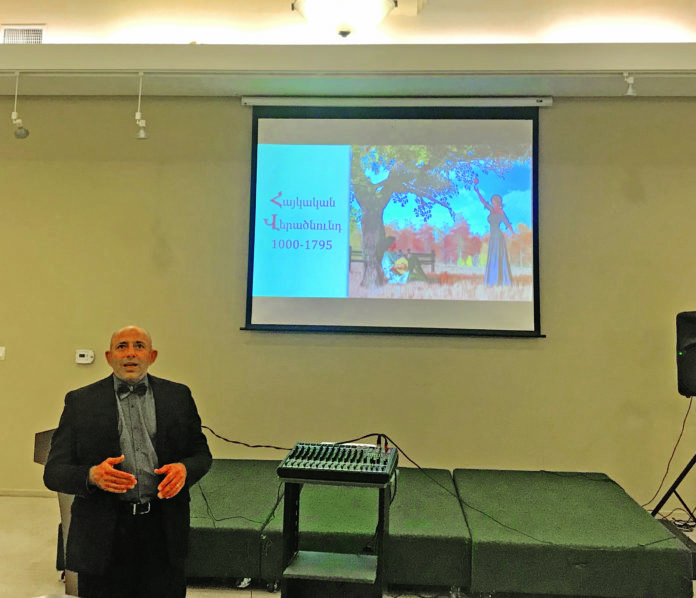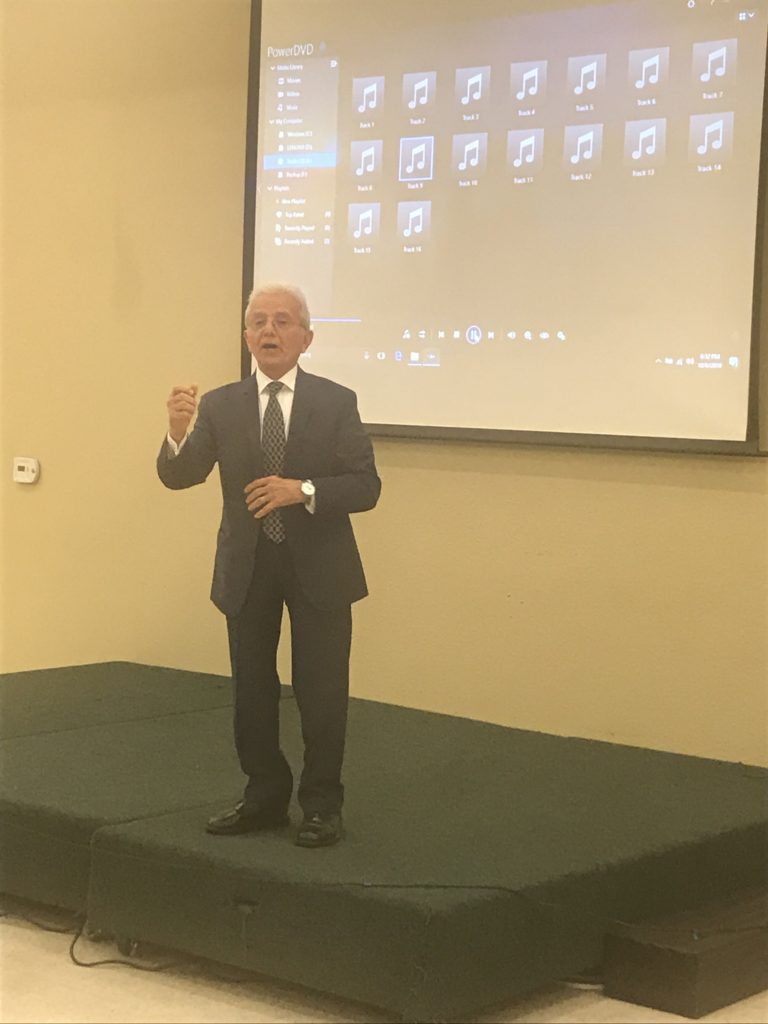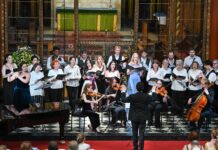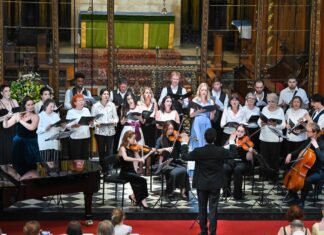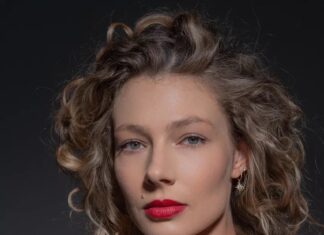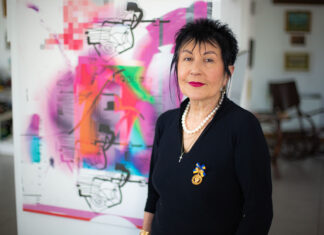By Kevork Keushkerian
ALTADENA, Calif. — A lecture organized by Tekeyan Cultural Association (TCA) Pasadena-Glendale Chapter on Sunday, October 6, at the Beshgeturian Center Hall, featured Norayr Dadourian and titled “The Armenian Rebirth (1000-1795).”
On behalf of TCA’s Pasadena-Glendale Chapter, Kevork Keushkerian welcomed the guests and then introduced the speaker.
Dadourian presented his lecture with a slide show that took a little over one hour, but it was both very interesting and highly informative. The Armenian Rebirth is the poetic era that starts after Krikor of Nareg (951-1003) and ends before Sayat Nova, who was born in 1712.
It was very interesting to hear that up until Krikor of Nareg, the Armenian poetry was spiritual in nature, composed of prayers and hymns, and addressed to God. After that, Armenian poetry took a major turn towards the secular realm, addressing previously considered taboo themes like the beauty of nature, enjoying food and drink, and confessions of love.
Slide by slide, Dadourian presented 19 poets, some of whom were religious fathers of the Armenian church and two of whom were females, a phenomenon very strange for that time period. This period of Armenian poetry started with Krikor Bahlavouni (990-1058) and ended with Naghash Hovnatan (1661-1722). Interestingly, Naghash means miniature painter.



